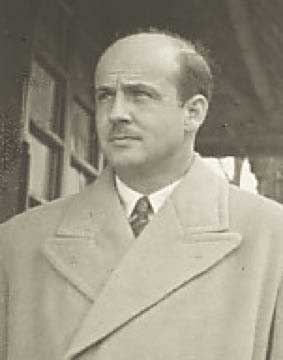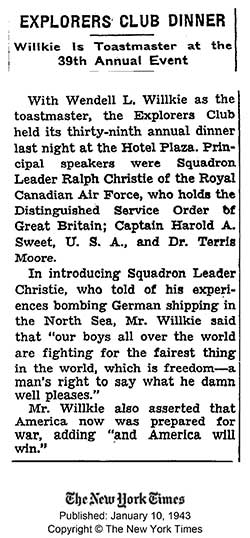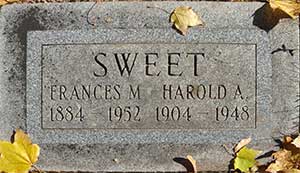THANK YOU!
YOUR PURCHASE OF THESE BOOKS SUPPORTS THE WEB SITES THAT BRING TO YOU THE HISTORY BEHIND OLD AIRFIELD REGISTERS
Your copy of the Davis-Monthan Airfield Register (available in paperback) with all the pilots' signatures and helpful cross-references to pilots and their aircraft is available at the link. 375 pages with black & white photographs and extensive tables
---o0o---
The Congress of Ghosts (available as Kindle Edition eBook) is an anniversary celebration for 2010. It is an historical biography, that celebrates the 5th year online of www.dmairfield.org and the 10th year of effort on the project dedicated to analyze and exhibit the history embodied in the Register of the Davis-Monthan Airfield, Tucson, AZ. This book includes over thirty people, aircraft and events that swirled through Tucson between 1925 and 1936. It includes across 277 pages previously unpublished photographs and texts, and facsimiles of personal letters, diaries and military orders. Order your copy at the link.
---o0o---
Military Aircraft of the Davis Monthan Register, 1925-1936 (available in paperback) at the link. This book describes and illustrates with black & white photographs the majority of military aircraft that landed at the Davis-Monthan Airfield between 1925 and 1936. The book includes biographies of some of the pilots who flew the aircraft to Tucson as well as extensive listings of all the pilots and airplanes. Use this FORM to order a copy signed by the author, while supplies last.
---o0o---
Art Goebel's Own Story (available as free PDF download) by Art Goebel (edited by G.W. Hyatt) is written in language that expands for us his life as a Golden Age aviation entrepreneur, who used his aviation exploits to build a business around his passion. Available as a free download at the link.
---o0o---
Winners' Viewpoints: The Great 1927 Trans-Pacific Dole Race (available as Kindle Edition eBook) is available at the link. This book describes and illustrates with black & white photographs the majority of military aircraft that landed at the Davis-Monthan Airfield between 1925 and 1936. The book includes biographies of some of the pilots who flew the aircraft to Tucson as well as extensive listings of all the pilots and airplanes. Use this FORM to order a copy signed by the author, while supplies last.
---o0o---
Clover Field: The first Century of Aviation in the Golden State (available in paperback & Kindle Edition) With the 100th anniversary in 2017 of the use of Clover Field as a place to land aircraft in Santa Monica, this book celebrates that use by exploring some of the people and aircraft that made the airport great. 281 pages, black & white photographs.
---o0o---
YOU CAN HELP
I'm looking for information and photographs of pilot Sweet and his airplane to include on this page. If you have some you'd like to share, please click this FORM to contact me.
---o0o---
SPONSORED LINKS
HELP KEEP THESE WEB SITES ONLINE
FOR YOUR CONVENIENCE
You may NOW donate via PAYPAL by clicking the "Donate" icon below and using your credit card. You may use your card or your PAYPAL account. You are not required to have a PAYPAL account to donate.
When your donation clears the PAYPAL system, a certified receipt from Delta Mike Airfield, Inc. will be emailed to you for your tax purposes.
---o0o---
HAROLD ARTHUR SWEET
Like many pilots of the Grand Central Terminal (GCAT) Register, everywhere he appears Harold Sweet is signed in by his last name simply as "Sweet." His landings at GCAT number over 180, and that's just during a brief period of some months during 1930-31. The majority of his flights were in the Ford trimotor, NC5577, owned and operated at the time by the Curtiss-Wright Flying Service. Most of his flights were local, scenic hops lasting only a few minutes. A news article exhibited at fellow Register pilot Henry Batson's page describes some of the festivities surrounding one of the GCAT "open-house" weekends held in May, 1930.
Finding out who "Sweet" was is a good example of the luck and detective work your Webmaster routinely faces for a good number of Register people. First I went to this REFERENCE, which is a who's who of aviation personalities in the U.S. through 1928. Beginning on page 133 of this book is a listing of all the Department of Commerce license numbers, and the names of the pilots who earned them. On page 167 of that list there are two Sweets. Harold A., Transport license T1191, with an address in Salt Lake City, UT, and Homer Gilbert, Limited Commercial license LC1178, living in Denver, CO. Neither was anywhere near Glendale in 1928. Next search was a review of ancestry.com data for both men.
 |
According to the 1930 U.S. Census, Homer G. Sweet, although a pilot who earned a high-category pilot license, was listed as a patent attorney with a practice in Denver. He was not flying airplanes with any frequency at GCAT in 1930. As well, he appears in none of the Delta Mike group of airfield Registers, not even our Peterson Field Register, which was close to Denver.
The 1930 Census, taken during the month of April, also lists Harold A. Sweet, age 26, married, living with his mother, Frances M. (widowed) in a rental house ($85/month) at 334 Vendome Avenue, Los Angeles, CA. He lived also with his wife (but see below), Carol H. Sweet, age 21 (identified as daughter-in-law of Frances) and his sister, Doris, age 19. Harold Sweet's occupation was listed as "Pilot" working for an "airplane company."
So Harold Sweet was a working pilot in Los Angeles. Chances are good he was the "Sweet" of the GCAT Register, and that the "airplane company" he worked for was the Curtiss-Wright Flying Service (abbreviated "C.W.F.S. in the Register). To find Harold in the first two possibilities was indeed lucky. Photograph, right, from the Hill Air Force Base Web site at the link.
The link also presents a brief biographical sketch. It states that he was a self-taught pilot who barnstormed during the 1920s and traveled to the Philippines to fly the U.S. Mail during 1930. His move to the Orient might have been provoked by his activities described in the following article from The New York Times of March 22, 1930. It seems he was arrested in southern California for his alleged activities in relation to a human trafficking scheme. I do not know the outcome of adjudication (if you can help fill in the blanks, please let me KNOW). Today, if he was guilty of a crime performed with an airplane, he would either have to forfeit any federal licenses he held or they would be suspended for a period. Or he might be imprisoned. However, below, you will see that he did fly in the U.S. again within a short time after this incident. And, a decade later, below, wartime priorities enabled a pilot of his experience to fly Army transports regardless of his civil licensing status.
 |
It is after his return from the Philippines, and probably after the arrest was resolved, that we find him flying his first scenic flights from GCAT on December 12, 1930. Interestingly, the frequency of his flights at GCAT tapered off and ended quietly in July, 1931, his role taken over by "Gaskill."
I have no information about his whereabouts between 1931 and 1937 (was he in jail?). According to the link, Sweet returned to the Orient later, and was described as, "A true 'soldier of fortune,' he joined the Pan American-operated China National Aviation Corporation (CNAC), based in Shanghai and Hong Kong, in 1937 as a captain." And further, "After America entered the Pacific War in 1941, Sweet and CNAC pioneered the "Hump" routes over the Himalayas and flew supplies to the Flying Tigers in team with the USAAF's Air Transport Command. Sweet ferried U.S. aircraft between Natal, Brazil and Lagos, Nigeria to Cairo for Pan Am-Africa Ltd. from 1942-1943, then returned to CNAC."
By the onset of WWII, Sweet was a senior citizen when compared to the military fliers being trained for the war effort. However, already well-experienced in air transport, he was involved very early in the war effort. Another article in the Times from December 15, 1941 (just a week after Pearl Harbor), he was part of a major rescue and evacuation by air of Chinese nationals and Americans from Hong Kong as it fell to the Japanese. He and seven fellow CNAC pilots made 16 ferry trips from Hong Kong to points 200 miles inland. Their passengers, "... hailed the shuttle service as the most perilous bit of work in the history of commercial aviation." And, no casualties were recorded.
And another Times article of May 25, 1942 (just a month after the Doolittle Raid on Japan) quoted him on a few points he made about how quickly he thought the Japanese would succumb, likening the early Japanese successes as a, "skyrocket that has reached the top of its flight."
As well, as a CNAC captain he appeared as a passenger on a Boeing transport at the end of one of his trans-Atlantic flights. Below, from ancestry.com, is the entry declaration for the airplane and its crew dated December 17, 1942, a little over a year after hostilities began.
 |
This Immigration and Customs entry declaration documents passage of the airplane and crew from Natal, Brazil, then north via Trinidad, to Palm Beach, FL to Washington, DC. Sweet, age 38 is third in the list of citizens in this document. He, and perhaps some of the other U.S. personnel, were probably relief pilots and crew for this long voyage. The purpose of this voyage was not made apparent.
 |
However, of real human interest is the listing of two children in the document. Six-year-old John Dobbs is listed right after Sweet. The lone alien (mistakenly identified as a British subject), was an 8-year-old girl who appears last on the passenger list. Soon after their return to the U.S., The New York Times (NYT) of January 24, 1943 reported their story at left, and revealed the purpose of the flight.
Specifically, Jennifer and John Dobbs were China-born children of two American citizens trapped in China at the onset of WWII. The story of the childrens' reunion with their mother over two years later is documented in this article, along with Sweet's role.
Also of interest is the airplane they flew in (information abridged from Joe Baugher's Web site). It was initially a Boeing 307, manufacturer's S/N 2000. The Army number, 88626, was assigned after the government impressed the airplane for war service early in 1942. Before that it was registered NC19908 to TWA. Near the end of the war, it was returned to TWA in July, 1944 and rebuilt as an SA-307B-1, and reassigned registration number N19908.
 |
In another few years N19908 sold to French Aigle Azur Transports, Aeriens, France in July, 1951 as F-BELY. It then was sold to Air Laos in 1952, probably during French occupation of the region, then to Airnautic in November, 1959.
The Vietnam War ensued, and the airplane went back to Air Laos as XW-PGR during April, 1970. Operated by Royal Air Laos as XW-PGR. It was damaged on the ground February 27, 1971 (a result of military action?) and sat derelict at Luang Prabang for several years. It then sold to Cambodia Air Commercial in 1974. The airplane is believed to have been damaged in a collision with C-47 (a militarized DC-3), April 20, 1971, at Luang Prabang and cut up for scrap.
Sweet shows up in The New York Times again about a year later, right. This time he was a speaker at a meeting of the Explorer's Club in New York City. I have no information about the topic of his talk, but it was probably related to the trans-Atlantic activities of the Air Corp and commercial transport companies on behalf of the war effort. That he mentioned the feel-good reunion of the Dobbs children with their mother was also probable, if only for illustrating the human side of war.
 |
The Hill Air Force Base link goes on to say that after WWII, in 1946, Sweet rejoined his family in California, where he passed away April 11, 1948. He died at the age of 43. The photograph, right, is of his grave marker framed by fall leaves. It memorializes Sweet and his mother, Frances M. Their gravesite is in Salt Lake City.
Finally, the CNAC Web site presents biographical information about Sweet, including additional news articles about his CNAC activities, as well as a newspaper obituary from the Los Angeles TImes of April 16, 1948. Photographs of his wife are also at the link. They are, however, not of Carol, mentioned in the 1930 Census, above. It seems that Sweet married another woman, Mabel Brazee, when he was in the Philippines in 1930. Born in 1910, she died December 17, 2004 and is buried in California. She and Sweet raised seven children. I have no record of the fate of his ex-wife, Carol.
Sweet was inducted posthumously into the Utah Aviation Hall of Fame in 2012. He is among the list of fliers who flew "The Hump" during WWII. For what it's worth, none of the links I provide from this page discuss or even mention the arrest of Sweet cited above. Incidentally, the original photograph from which Sweet's portrait, above, was clipped can be viewed at the CNAC Web site at the link. The original image includes fellow CNAC pilot and Parks Airport Register signer Paul Kessler. Indeed, the pilots of the Registers form a Web unto themselves.
---o0o---
SPONSORED LINKS
THIS PAGE UPLOADED: 10/05/15 REVISED:
